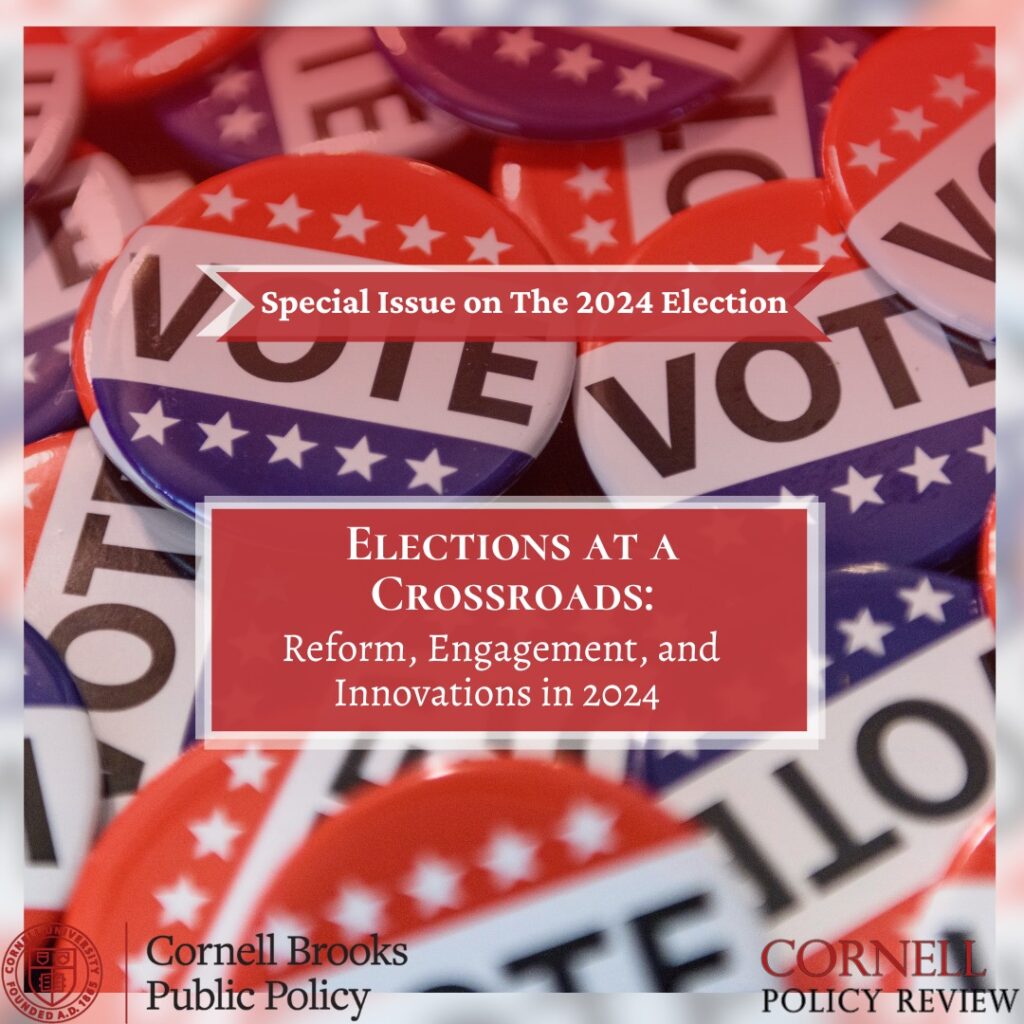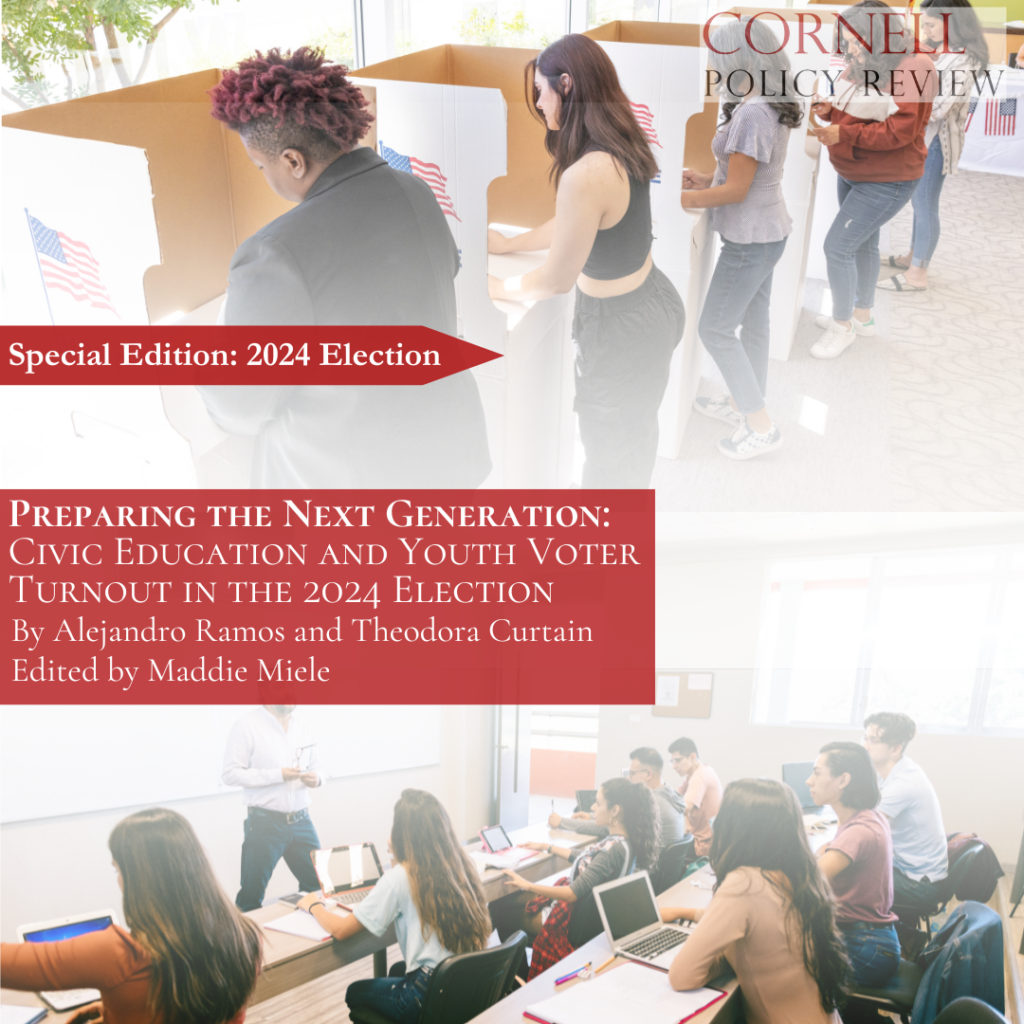By: Christopher L. Harvey
Edited by: Stephen Shiwei Wang
Graphic by: Arsh Naseer
Introduction
When American citizens cast their vote at the ballot box this year, it will mark the sixtieth time since the nation’s founding that Americans will vote for a president and vice president.1 Typically, in most elections, the person with the most votes wins. But when it comes to electing the leader of the free world, things tend to get a little more… complicated. Imagine a football game where the final score does not determine a winner, but other specific statistics do. That best describes how the Electoral College operates.
Origins of the Electoral College
To understand the Electoral College today, it is essential to understand American politics during the late 1700s. During the years after the American Revolution of 1776, the Articles of Confederation served as the initial Constitution of the United States, establishing the first version of the U.S. national government.2 At that time, thirteen states, formerly known as the original thirteen colonies, formed the United States of America through a League of Friendship that recognized each state as sovereign and independent of each other.3 While the Articles of Confederation centralized our government, they were never perfect. Some founders were concerned that states maintained too much power and the central government did not have the authority to regulate commerce, settle quarrels between the states, tax, and maintain financial security, amongst other notable issues.4 To address those concerns, the founders hosted a Constitutional Convention in 1787 in Philadelphia to revise the Articles of Confederation. During those three months of 1787, the topic of voting representation for electing a president and vice president came up, which led to the creation of the Electoral College. For context, it is essential to note that this was considered uncharted territory for the founders because no other country had a representative democracy that directly elected its chief executives. The founders also deeply distrusted executive authority due to the events that started the American Revolution War and authoritarian rule.
How the Electoral College Works Today
The Electoral College, formed through a compromise of the framers of the U.S. Constitution to balance power between states during the Constitutional Convention of 1787, is a collection of electors from each state who choose the president and vice president.5Article II, Section 1, Clause 2 of the U.S. Constitution and the twelfth and twenty-third Amendments outline the full scope of these electors.6 There are 538 electors, one for each U.S. Senator and Representative and three representing the District of Columbia.7 “Each state’s electoral vote total equals the combined total of its congressional delegation.”8 Additionally, each state legislature is responsible for selecting its electors.9 Electors chosen in each state are usually party loyalists and people with years of service in those parties. Once it is time to award electoral votes, states use one of two methods: (1) Winner-Take-All System and (2) District System. The winner-take-all system is utilized by forty-eight states and the District of Columbia. This system awards all the electors to the presidential candidate that wins the state’s popular vote. Within the district system, the two states of Maine and Nebraska divide their electoral votes based on the winner of the state’s popular vote and the winner of each state’s congressional district race.
Past Controversies and Relevance Today
For over 200 years, the Electoral College has been the foundation of presidential elections since the election of George Washington. However, not every outcome of presidential elections has aligned with national sentiment. In total, there have been five times where the popular vote winner lost the Electoral College vote.10 Most recently in modern political history, the elections of 2000 and 2016 underscored the debate on whether the Electoral College serves its purpose for our representative style of democracy. According to the Pew Research Center, “more than six-in-ten Americans (sixty-three percent) prefer to see the winner of the presidential election be the person who wins the most votes nationally.”11Additionally, Gallup conducted a poll in September on the same topic with fifty-eight percent of Americans in favor of the popular vote electing the president compared to the thirty-nine percent who still favors the Electoral College electing the president.12 The current sentiment of Americans and their thoughts on our electoral system force us to ask an important question: Is the Electoral College still needed, or has it passed in relevance?
Arguments Supporting the Electoral College
When the framers debated the merits of forming the Electoral College during the Constitutional Convention of 1787, much of their discussion focused on state representation.13 The idea was to ensure that smaller states could maintain their influence in elections and prevent candidates from campaigning in other states’ more populated urban areas. Another area the framers wanted to focus on was general stability in the election. There was a concern that regional candidates and regional issues could sway a potential national election.14 The framers intended candidates to build multi-state coalitions considering multiple interests, emphasizing each state’s role in national elections. Another reason for the importance of the Electoral College is maintaining federalism. The framers wanted a power balance between the states and the federal government. Allowing each state to choose electors that ultimately decide the presidency provided a balance of power the framers intended. That balance ensured that the presidency would not be decided by a national vote but by the will of the states that made up the new national government.
Arguments Against the Electoral College
The structure of the Electoral College encourages presidential candidates to concentrate their campaigns on a limited number of swing states. Swing states are states where a Democrat or a Republican could win by a relatively close margin. In this year’s presidential election, those swing states are Arizona, Georgia, Michigan, Nevada, North Carolina, Pennsylvania, and Wisconsin.15 The notion that the Democratic and Republican campaigns focus a lot of their attention on those swing states creates a sense of neglect for voters in non-swing states, diminishing their influence in shaping the election. Everyone wants to feel and know that their vote counts. One of the most significant criticisms of the Electoral College is that it can produce a president who did not win the national popular vote. As mentioned earlier, this outcome has occurred five times throughout political history. It contradicts the principle of majority rule and casts a shadow over our electoral system, leaving many Americans lacking trust in our elections.
Final Thoughts
The Electoral College was never meant to be perfect. As one of the framers of the Constitution, Alexander Hamilton, stated in the Federalist Paper: No. 68: “I venture somewhat further, and hesitate not to affirm, that if the manner of it be not perfect, it is at least excellent. It unites in an eminent degree all the advantages, the union of which was to be wished for.”16 Two centuries later, the debate over the Electoral College’s relevance continues. While it offers certain benefits, such as protecting smaller states, it raises fundamental questions about fairness and representation. If we are “to form a more perfect union” in this experiment named democracy, we must decide whether it is time to transition to a system that more directly reflects the will of the people or adapt the Electoral College to meet modern democratic ideals.17
Work Cited
1. Aaron. 2024. “History of U.S. Presidential Elections – Statistics & Facts.” Published July 3. Accessed October 16, 2024. https://www.statista.com/topics/6273/us-presidential-elections-1789-2016/#topicOverview.
2. “Articles of Confederation (1777).” 2023. National Archives. Published October 23. https://www.archives.gov/milestone-documents/articles-of-confederation#:~:text=The%20Dickinson%20Draft%20of%20the,have%20one%20vote%20in%20Congress.
3. Ibid.
4. Ibid.
5. “Electoral College History.” 2024. National Archives. Published June 26. https://www.archives.gov/electoral-college/history#whyec.
6. “The Electoral College.” 2024. National Conference of State Legislatures. Last modified October 8. Accessed October 16, 2024. https://www.ncsl.org/elections-and-campaigns/the-electoral-college.
7. Ibid.
8. Ibid.
9. Ibid.
10. Roos, Dave. 2024. “5 Presidents Who Lost the Popular Vote But Won the Election.” History. Last modified October 16. Accessed October 16, 2024. https://www.history.com/news/presidents-electoral-college-popular-vote.
11. Kiley, Jocelyn. 2024. “Majority of Americans Continue to Favor Moving Away from Electoral College.” Pew Research Center. Published September 25. https://www.pewresearch.org/short-reads/2024/09/25/majority-of-americans-continue-to-favor-moving-away-from-electoral-college/.
12. Jones, Jeffrey M. 2024. “Americans Still Favor Replacing Electoral College System.” Gallup. Published September 27. https://news.gallup.com/poll/651353/americans-favor-replacing-electoral-college-system.aspx.
13. “United States Election Assistance Commission.” 2011. The Electoral College. Washington, DC: U.S. Election Assistance Commission. http://purl.fdlp.gov/GPO/gpo77477.
14. Roos, Dave. 2024. “Why Was the Electoral College Created?” History. Last modified October 7. https://www.history.com/news/electoral-college-founding-fathers-constitutional-convention.
15. Davis, Elliott Jr. 2024. “7 States That Could Sway the 2024 Presidential Election.” US News. Published October 2. https://www.usnews.com/news/elections/articles/7-swing-states-that-could-decide-the-2024-presidential-election.
16. Hamilton, Alexander, James Madison, and John Jay. 2009. Federalist No. 68. New York: Palgrave Macmillan US. doi:10.1057/9780230102019_37.
17. “The U.S. Constitution: Preamble.” n.d. US Courts. Accessed October 22, 2024. https://www.uscourts.gov/about-federal-courts/educational-resources/about-educational-outreach/activity-resources/us#:~:text=%22We%20the%20People%20of%20the,for%20the%20United%20States%20of.


